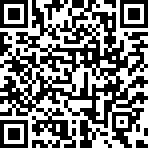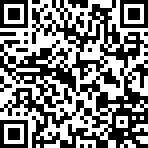 |
Case Report
Femoral artery dissection and ileum perforation caused by a camel bite: A case report
1 MD,Resident physicians, Department of Emergency Medicine, Tawam hospital, Al-Ain, Abu Dhabi, UAE
2 MRCS, FRCEM,Consultant physicians, Department of Emergency Medicine, Tawam hospital, Al-Ain, Abu Dhabi, UAE
3 MS, DNB, DCH, FRCS, FRCEM, PGCHCL, Chairman of the Department of Emergency Medicine, Tawam hospital, Al-Ain, Abu Dhabi, UAE
Address correspondence to:
Hussein Sheleh
Al-Ain, Abu Dhabi, P.O. Box:15258,
UAE
Message to Corresponding Author
Article ID: 100057Z06HS2019
Access full text article on other devices

Access PDF of article on other devices

How to cite this article
Sheleh H, Abduljawad N, Moustafa R, Nayeem A, Chatha H, Jaiganesh T. Femoral artery dissection and ileum perforation caused by a camel bite: A case report. Case Rep Int 2019;8:100057Z06HS2019.ABSTRACT
Introduction: Camel bites constitute a relatively rare type of animal bite-related injuries, which tend to occur mainly in some regions of the developing world. Although they often leave trivial bite marks on the surface, they can be associated with a serious damage to tissues and a high rate of infection.
Case Report: A 60-year-old male presented to our emergency department few hours after being bitten by a camel in the right lower abdomen. His chief complaint was severe abdominal pain. He was found on examination to have decreased pulses in the right lower limb. A computed tomography scan of the abdomen with intravenous contrast revealed a filling defect in the right common femoral artery and free air in the peritoneum. The vascular and general surgeons on-call were consulted and the patient was shifted to the operation room, where exploration of the right groin showed dissection of the common femoral artery and clots in the superficial femoral & profunda femoris arteries. This was followed by an exploratory laparotomy that identified a perforation of the ileum. Both injuries were repaired successfully and the patient was discharged seven days later in a good condition.
Conclusion: When approaching a patient with this type of bites, it’s paramount to remember that small puncture wounds on the skin could be lying on top of a life-threatening detriment.
Keywords: Camel bite, Femoral artery dissection, Ileum perforation
SUPPORTING INFORMATION
Author Contributions
Hussein Sheleh - Substantial contributions to conception and design, Acquisition of data, Analysis of data, Interpretation of data, Drafting the article, Revising it critically for important intellectual content, Final approval of the version to be published
Nawras Abduljawad - Substantial contributions to conception and design, Acquisition of data, Analysis of data, Interpretation of data, Drafting the article, Final approval of the version to be published
Rama Moustafa - Acquisition of data, Drafting the article, Final approval of the version to be published
Asim Nayeem - Substantial contributions to conception and design, Revising it critically for important intellectual content, Final approval of the version to be published
Hamid Chatha - Acquisition of data, Analysis of data, Interpretation of data, Revising it critically for important intellectual content, Final approval of the version to be published
Thiagarajan Jaiganesh - Substantial contributions to conception and design, Analysis of data, Interpretation of data, Revising it critically for important intellectual content, Final approval of the version to be published
Guaranter of SubmissionThe corresponding author is the guarantor of submission.
Source of SupportNone
Consent StatementWritten informed consent was obtained from the patient for publication of this case report.
Data AvailabilityAll relevant data are within the paper and its Supporting Information files.
Conflict of InterestAuthors declare no conflict of interest.
Copyright© 2019 Hussein Sheleh et al. This article is distributed under the terms of Creative Commons Attribution License which permits unrestricted use, distribution and reproduction in any medium provided the original author(s) and original publisher are properly credited. Please see the copyright policy on the journal website for more information.





